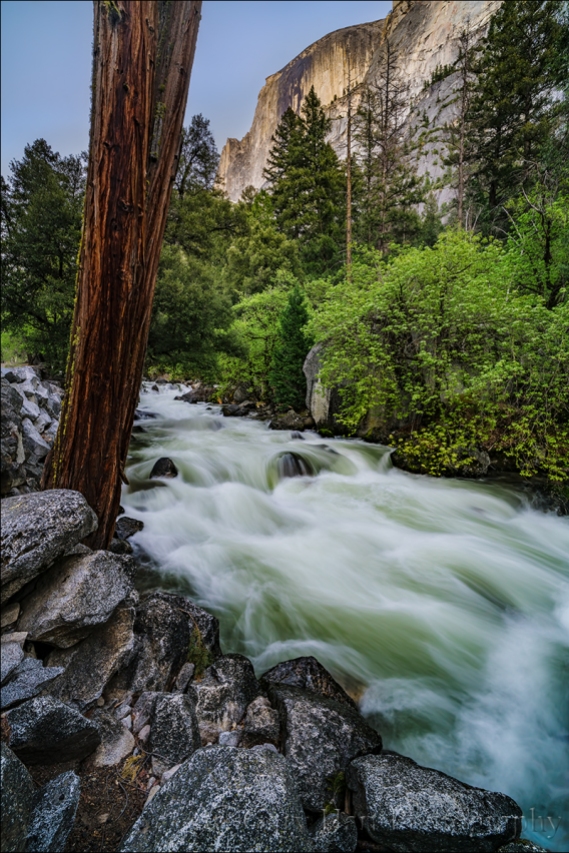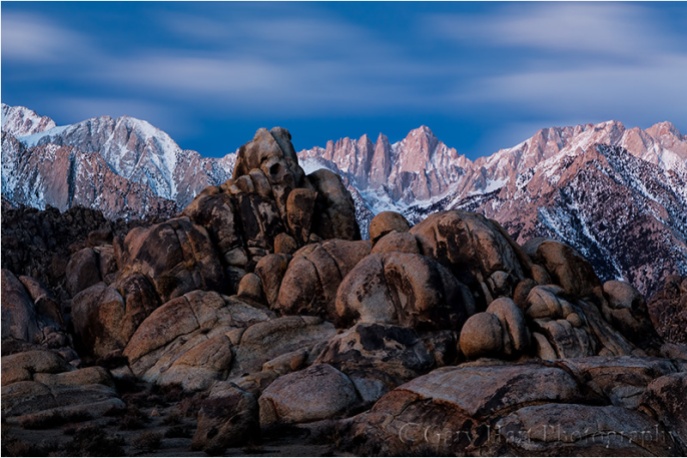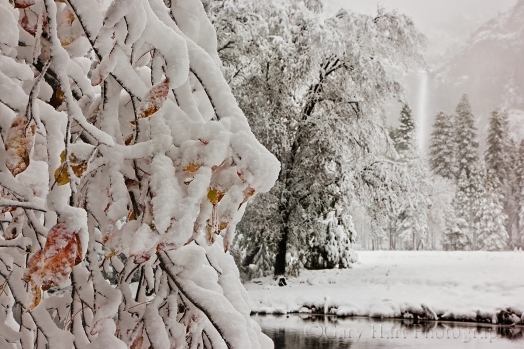Eloquent Images by Gary Hart
Insight, information, and inspiration for the inquisitive nature photographer
Everyone’s a Photographer Until…
I have a T-shirt that says, “Everyone’s a photographer until…,” above a picture of a camera exposure-mode dial set to Manual. In my mind, this is one of those declarations that’s as true as it is funny (if you don’t see the humor, you’re probably not a photographer anyway).
 I write this with no very little judgement or condescension. Photography needs to make you happy, and if having to think about shutter speeds, f-stops, and ISO saps your joy, then set your camera’s dial to Auto and have a blast. And my goal isn’t to shame auto-shooters, it’s just to point out (again) that photography’s greatest opportunity for creativity comes with mastery of your scene’s “creative triad”: motion, light, and depth. And you can’t master the creative triad without mastering the exposure variables: shutter speed, ISO, and f/stop. Period.
I write this with no very little judgement or condescension. Photography needs to make you happy, and if having to think about shutter speeds, f-stops, and ISO saps your joy, then set your camera’s dial to Auto and have a blast. And my goal isn’t to shame auto-shooters, it’s just to point out (again) that photography’s greatest opportunity for creativity comes with mastery of your scene’s “creative triad”: motion, light, and depth. And you can’t master the creative triad without mastering the exposure variables: shutter speed, ISO, and f/stop. Period.
Though it’s quite possible to get fantastic pictures in full automatic exposure mode by simply framing up a composition and clicking, composition is only one of the variables that combine to make a successful image (see “creative triad” above). And composition happens to be the variable that’s easiest to master competently. So I’m afraid if you want to distinguish yourself as a photographer, you really need to bite the bullet and master exposure.
What IS exposure mastery?
It’s important to understand that the correct exposure for most images requires some level of compromise—a shutter speed, f-stop, or ISO that’s less than ideal. (Especially true if you’re not using a tripod—fortunately landscape photography is particularly suited to tripod use.) For example, achieving a shutter speed fast enough to freeze flowing water might require a less than ideal f-stop or ISO.
Exposure mastery means being able to achieve your desired motion, light, and depth with the absolute minimum exposure compromise. It also means knowing when your creative goal isn’t possible—for example, when there’s no usable exposure combination that will get both a foreground and background subject sharp, or blur a water feature (while still getting the light right).
(For the record, even though I’m a fulltime Manual shooter, Aperture/Shutter Priority shooters who do it the right way qualify as Manual shooters in my book because they are making decisions about all of their exposure variables. What’s the “right way”? Setting the shutter speed or f-stop based on what their creative vision calls for, and knowing how to manage exposure compensation to get the exposure right.)
The good news is, you don’t need to use Manual metering (or Aperture/Shutter Priority) all the time. But you really should know how to use it, and be able to identify when it does and doesn’t matter. Fortunately, it isn’t as difficult as most people fear.
Rather than reinvent the wheel, here’s my Photo Tips article on Digital Metering.
About this image
Exploring the bank of the Little Colorado River during this year’s Grand Canyon raft trip, I hunted compositions and waited for the late afternoon shade to arrive. One feature I especially wanted to highlight was the linear limestone shelves that formed long, stair-step ledges. After a little searching, I found the cascade in this image just upstream from where most in the group had gathered to swim and photograph.
Lacking an obvious foreground anchor, I settled for a small, c-shaped cascade, and lowered my tripod to within a couple of feet to exaggerate the feature’s prominence. When the shade finally arrived, the dynamic range instantly became a non-factor for my Sony a7RIV, making the light part of my exposure decision pretty straightforward.
The motion and depth part of the equation, however, were a different story. The churning cascades created random splashes that I knew would distracting in a still image, so I chose to eliminate them with a long shutter speed to smooth the water. Even though I was now in full shade, there was too much light to achieve enough motion blur without the help of a neutral density filter, so I added my Breakthrough 6-stop dark polarizer to my Sony 24-105 f/4 G lens. This also allowed me to polarize distracting sheen on the rocks and water’s surface.
I also really wanted front-to-back sharpness, far from a sure thing with a foreground so close and background so distant (an f-stop decision I’d never trust to one of the auto exposure modes). After consulting my hyperfocal app, I stopped down to f/16, focused on the cascade just behind the nearby rock protrusion, pushed my shutter speed until my pre-capture histogram looked right (4 seconds), and clicked.





































































Beautiful image. I like to irritate my fellow photogs shooting in aperture priority for my botanicals and landscape. For botanicals in the filed I use spot metering and exposure compensation and as a plus I allow my peers to feel superior to me because they shoot in full manual and they think I can’t do it 😒 the advantage, I think, is that the camera will make small adjustments to the changing light and I have more time to work on my composition. But since you mentioned that “Aperture/Shutter Priority shooters who do it the right way qualify as Manual shooters in my book because they are making decisions about all of their exposure variables” it’s not so much fun to mention my shortcomings here 😉
Thanks, Alessandra. Yeah, my point isn’t so much that there’s something special about manual metering, it’s just that you need to understand metering and exposure to use it. I prefer Manual mode, but definitely understand the case for Aperture/Shutter priority. 😊
I know. I was trying to be funny about photographers’ pride in saying that they shoot fully manual, and the judgement that those who chose not to di that way, receive 😉